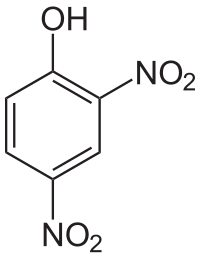
Photo from wikipedia
The explosive 3-nitro-1,2,4-triazol-5-one (NTO) presents a physiochemical challenge for treatment of munitions wastewater. Leveraging NTO's ionic character in neutral pH wastewater allows for expanded treatment options. Four commercial drinking water… Click to show full abstract
The explosive 3-nitro-1,2,4-triazol-5-one (NTO) presents a physiochemical challenge for treatment of munitions wastewater. Leveraging NTO's ionic character in neutral pH wastewater allows for expanded treatment options. Four commercial drinking water anion exchange resins specific for NO3- and ClO4- were evaluated for NTO adsorption extent, adsorption kinetics, and regeneration potential. Batch studies demonstrated NTO adsorption to all resins tested (max 690 mg NTO/g resin) and that resins were regenerable with 6% NaCl. Adsorption capacities (88-99%) and desorption efficiencies (80-85%) of NTO from the resins remained stable over three loading cycles. Perchlorate selective resins adsorbed more NTO, with larger desorption efficiencies, than nitrate selective resins. Kinetic experiments demonstrated that equilibrium adsorption between NTO and resins occurs within 120 min of exposure, following the pseudo second-order model (K2 range 9.8 × 10-5 to 15 × 10-5 g resin/mg NTO/min). Intraparticle diffusion modeling suggested that boundary-layer diffusion was the predominant sorption mechanism in NTO adsorption to the resins compared to intraparticle diffusion. In synthetic wastewater mixtures of NTO, 2-4-dinitroanisole (DNAN), nitroguanidine (NQ), and hexahydro-1,3,5-trinitro-1,3,5-triazine (RDX), only NTO was exchanged to any great extent. This work suggests that perchlorate anion exchange resins may be a viable segregation technology for NTO from munitions wastewater as compared to activated carbon.
Journal Title: Journal of hazardous materials
Year Published: 2022
Link to full text (if available)
Share on Social Media: Sign Up to like & get
recommendations!